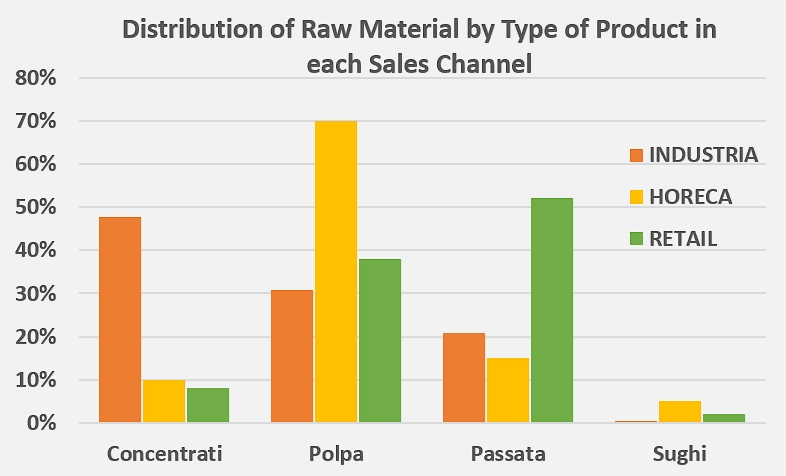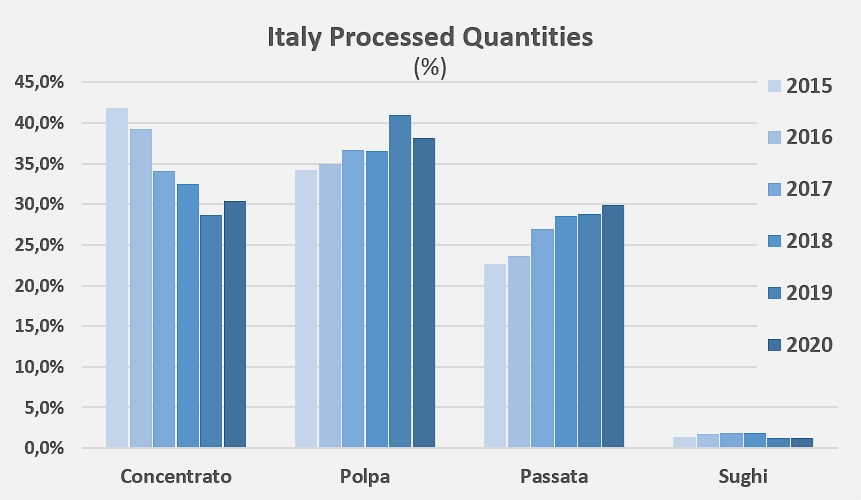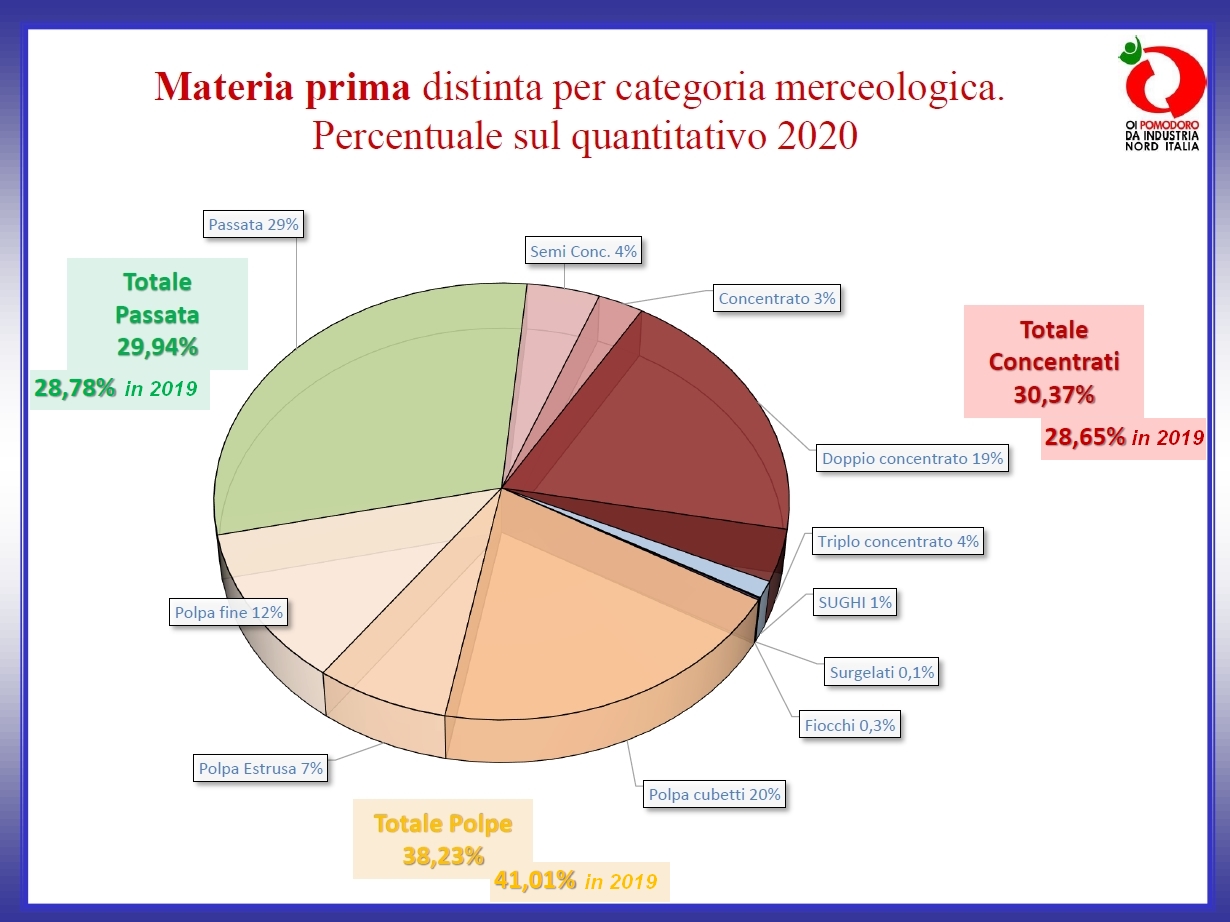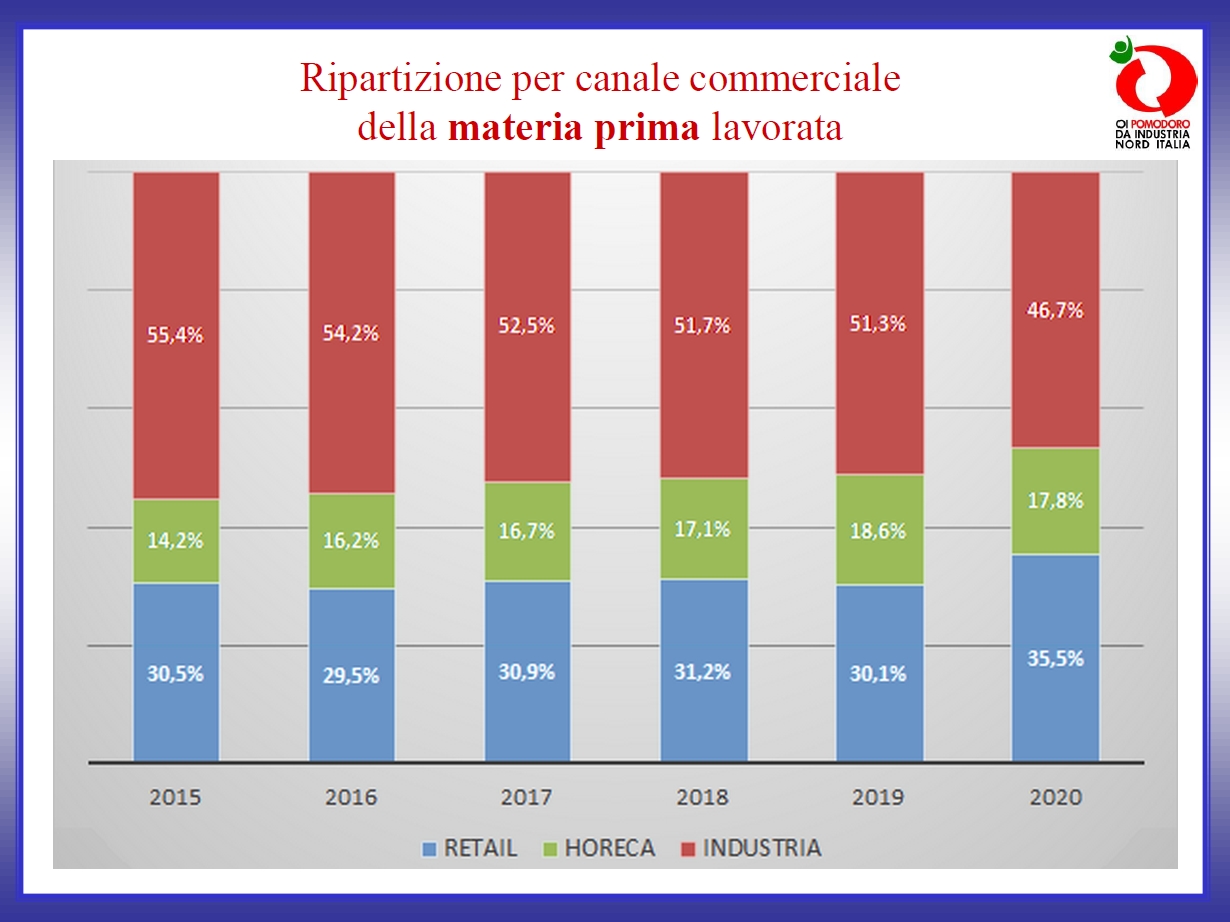Press release
, François-Xavier Branthôme
“Polpa” are at the top in terms of volume
According to figures compiled by the IO Pomodoro Nord Italia, the increase in quantities processed last year in northern Italy was accompanied by some slight changes in the way raw materials are distributed among the different categories of destination products. At the same time as business recovered to a level close to what it was between 2015 and 2017, the 2020 season saw the proportion of raw tomatoes intended for processing into paste increase after several years of gradual decreases and, conversely, the proportion used for manufacturing “polpa” (pulp, crushed peeled tomatoes) decline slightly after a strong increase during the previous processing season (2019). The quantities absorbed by the production of “passata” (sifted tomato puree) confirmed last year their steady growth observed for several years. In the final count, pastes (30.37%) and passata (29.94%) absorbed practically equivalent quantities of fresh tomato, while polpa absorbed more than 38% of the fresh volumes. Juices accounted a little over 1% of the total quantities processed (for more details, see the appendices at the end of this article).
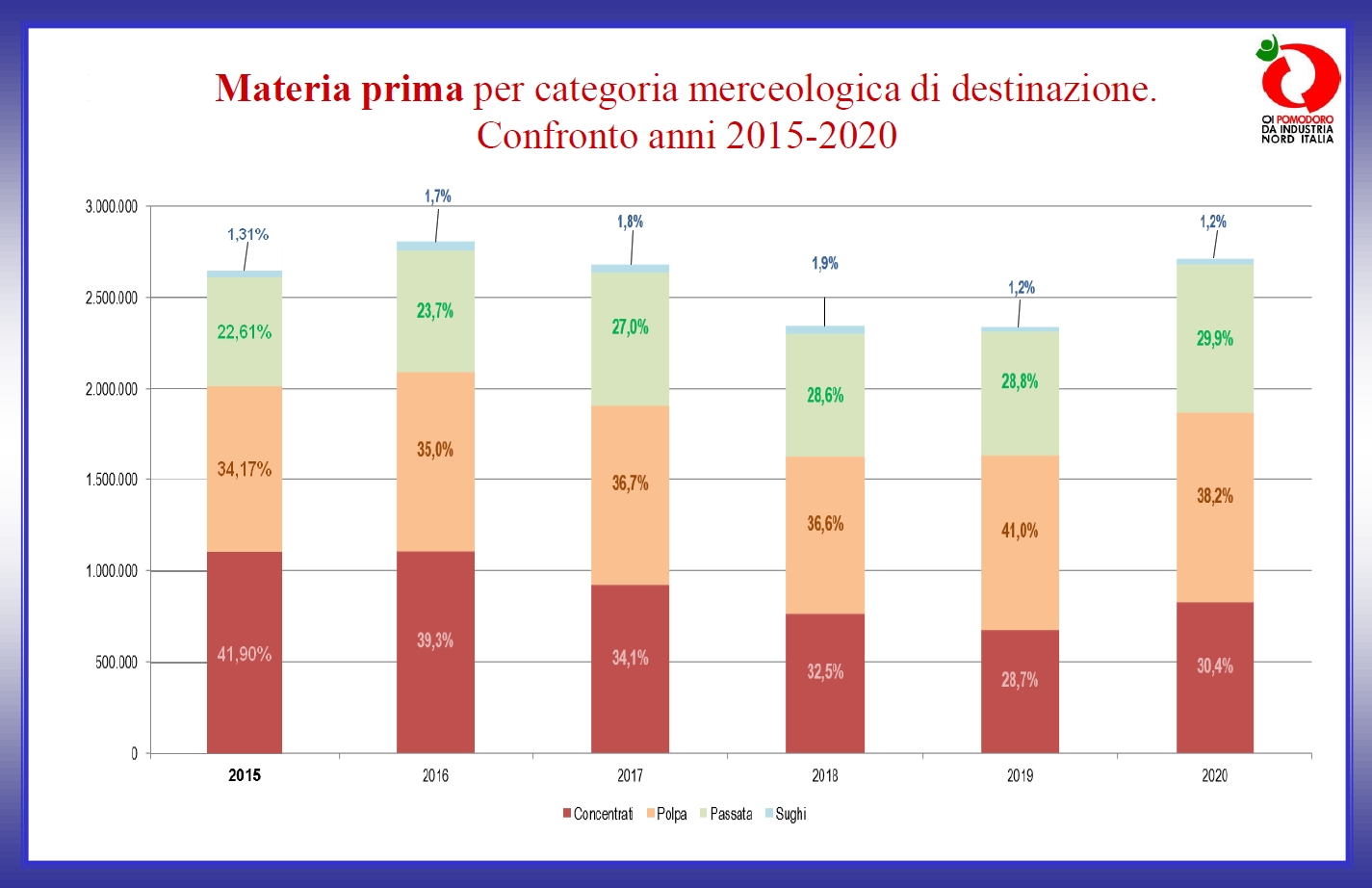
The effects of the Covid pandemic are clearly identifiable in the way the quantities of processed tomatoes are distributed among the different marketing channels: business in the sectors linked to the catering industry has decreased dramatically due to the confinement measures imposed around the world, with processing industries having to reduce to an extent the quantities processed for this sector in order to adapt to a sharp decline in demand and to mobilize stocks from the 2019 campaign that remained “dormant” at the height of the crisis.
Conversely, with confinement measures having enhanced the preparation and consumption of “in-home” cooking, processors focused on products for the retail market, which led to processed volumes increasing significantly in this sector and absorbing more than 35% of the total raw material used (against barely 30% on average over the five previous seasons).
The proportion of the harvest dedicated to manufacturing products intended for the industry, which have been declining steadily for several years, recorded a significant further decline in 2020 compared to the operations of the previous seasons. The quantities absorbed by this sector (less than 47% of total tonnages processed in northern Italy last year, compared to 53% on average over the previous five years), in the context of a significant increase in total volumes in 2020, were however higher last year than in 2019 and close to the quantities processed on average during the three previous seasons.
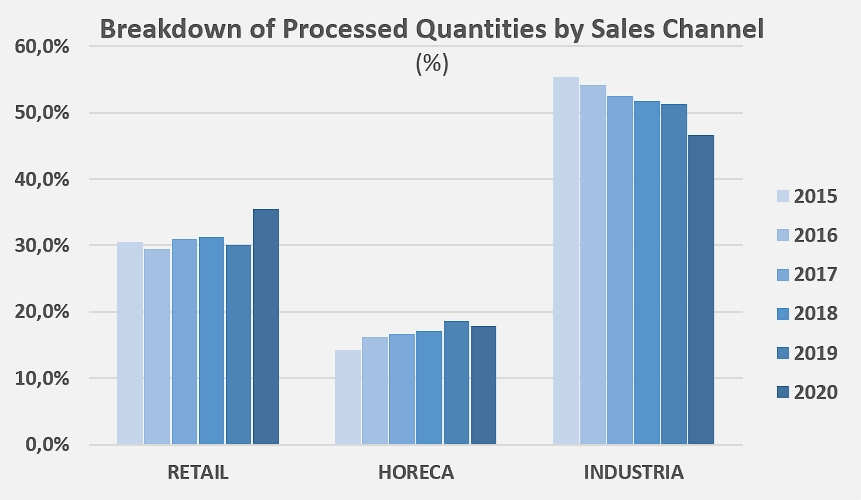
The distribution of the quantities of raw materials absorbed by each type of product (concentrated purees, pulps, passata and juice) within each of the marketing channels reveals a relative specialization, with pastes being more specifically intended for industrial uses (see also the additional information at the end of this article), the different types of pulp (diced, passata, extra-fine, etc.) being more generally sold to the HORECA sector and passata most commonly sold in retail outlets.
Some complementary data
Evolution of the quantities used for each type of product (concentrated purees, pulps, passata and juice) over the last six seasons in northern Italy.
Breakdown of the quantities of raw materials according to commercial category in northern Italy in 2020.
Breakdown of the quantities of raw materials according to marketing channel.
Breakdown of the quantities of raw materials according to each product category for each of the three marketing channels.
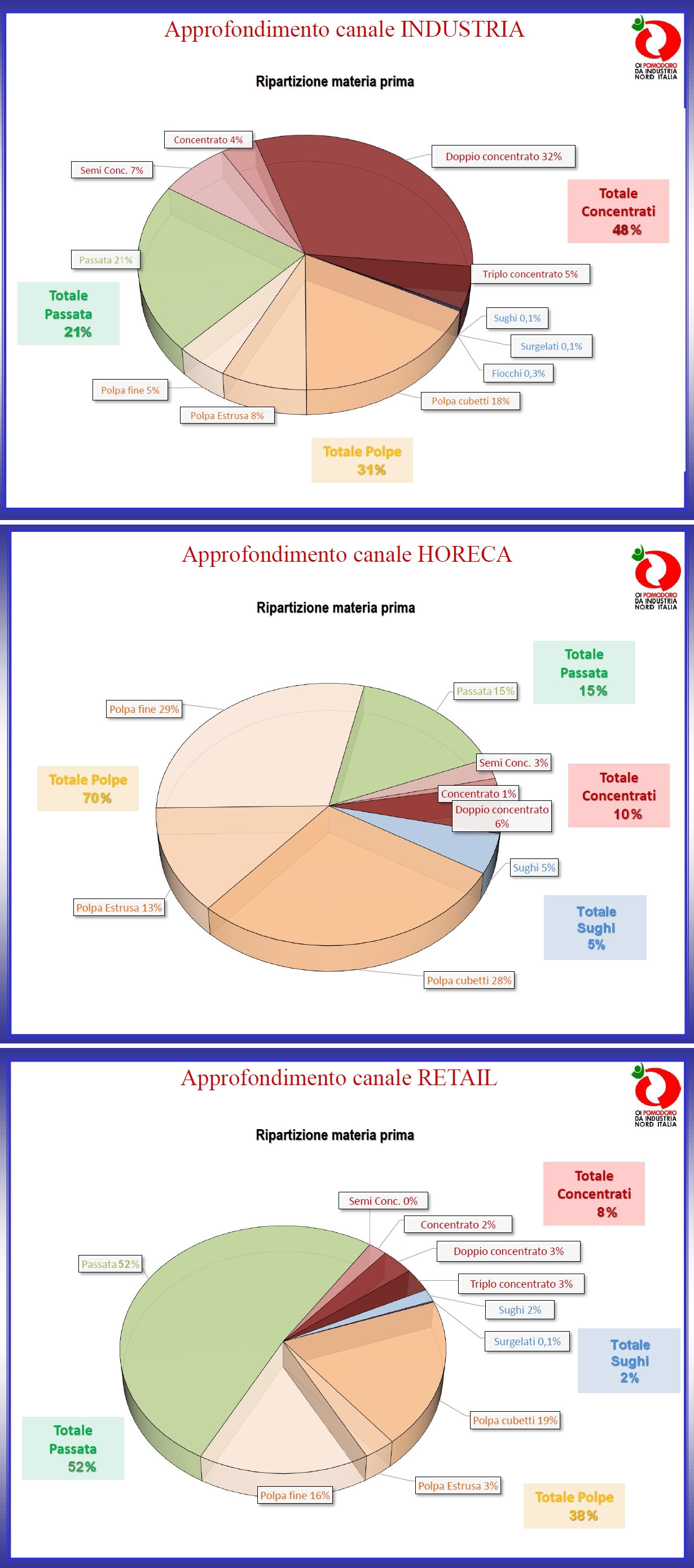
Some definitions provided by processors...
Polpa: crushed peeled tomatoes (large pieces, sweet fleshy pulp).
Polpa fine: finely crushed peeled tomatoes (finely crushed tomatoes to obtain a very fine pulp (pieces + sauce)).
Passata extrafine: extra fine tomato puree, passed through a very fine mesh sieve to remove all seeds and traces of skin, for a dense and velvety puree (brilliant red color, fresh tomato flavor, and sweetness).
Pulp and other tomato products
Tomato pulp is basically a peeled tomato already shredded into little pieces of different diameters (10 mm, 6 mm, 4 mm) mixed into a thicker juice (sauce). It is usually composed of 70% little pieces of tomato and of 30% sauce.
Diced tomato (14 mm or 16 mm) is tomato cut into cubes of a bigger size than tomato pulp. Usually it is a thinner product with a higher content of skins and seeds.
Peeled tomato is a whole tomato without skin, immersed in a thicker juice (sauce), not ready to use (because it must be crushed), and it includes higher contents of water and seeds.
Tomato purée is a semi-concentrated product, so the tomato is cooked for longer than fresh products (which are only seared), losing a bit of the natural freshness and taste that characterize tomato pulp or peeled tomato.
Tomato paste requires the tomatoes to be “cooked” for hours, leading to a very thick product that loses a large part of the tomato's natural water content and therefore also the taste and freshness of the fruit.
Tomato pulp and tomato fine pulp:
The difference between tomato pulp and fine pulp is basically the size of the tomato pieces included in the product. It contains 10 mm pieces, which are therefore more visible and perceptible in the mouth. Tomato fine pulp contains 6 mm pieces and is therefore a smoother and less rustic product.
Source: OI Pomodoro Nord Italia
Further details in attached documents:




